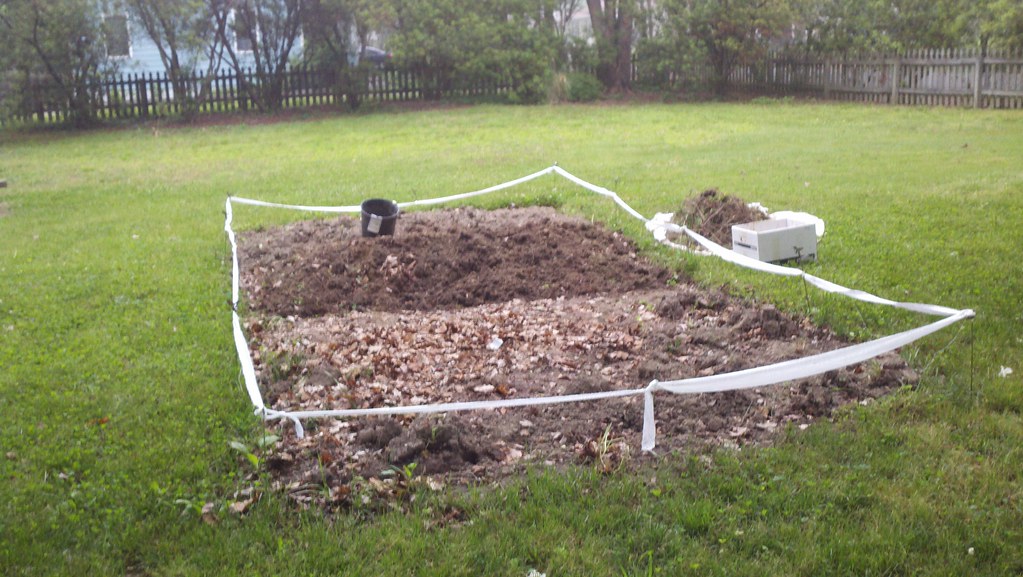(If you’re normally here for the knitting/crochet, I swear, we’ll get back to topic, but right now most of my knitting is still packed away, and what I am working on you can’t see much progress. The garden’s another story. Hang in there with me.)
As part of getting the gardens ready, we got permission from the owners of the house to revive what looks like a kitchen garden plot in the backyard. Since the soil was fairly compacted, and it looked like the garden hadn’t been used in many years, we decided to turn the soil. By hand, since we don’t have a tiller, but do have young backs and plenty of tools.
 |
| The garden, before we touched it. |
So we’ve carefully defined the edges of the garden, and straightened things out. I raked out all the leaves (which made our compost pile very happy), and tore strips of rags to make sure our edges were straight. The garden will be 12′ by 24,’ not huge, but not too small either.
 |
| Nearly half tilled, and looking a lot happier already. I mean, happy as a garden can get without plants. |
Each evening, when we get a spare moment, we spend a half an hour to 45 minutes working on turning the soil. It’s clear that this garden hasn’t been tilled in a while, or if it was, only the top 2″ of the soil. Because, as we are digging we are encountering some very mature root systems, (from trees in our neighbor’s yard), lots of rocks, and pottery shards.
Well, not only pottery shards. To date, we’ve found 2 marbles, pieces of a broken teacup, pieces from at least 3 different bottles, leather, rusted iron, a very rusted spoon or trowel, chain, tentpoles or stakes, 2 medicine bottles (unbroken) a crockery shards. Michael, being the historian that he is, has been having fun collecting pieces and matching them together. I laid claim to the marbles.
It’s taken some hacking away to get rid of the roots we don’t want, and plenty of sweat even though we’re half done. Personally, if I were to do a garden, I’d do raised beds, and I’d make it much narrower, with rows so I could walk in between the plants. But this is what was there, and this will be what we’ll use.




